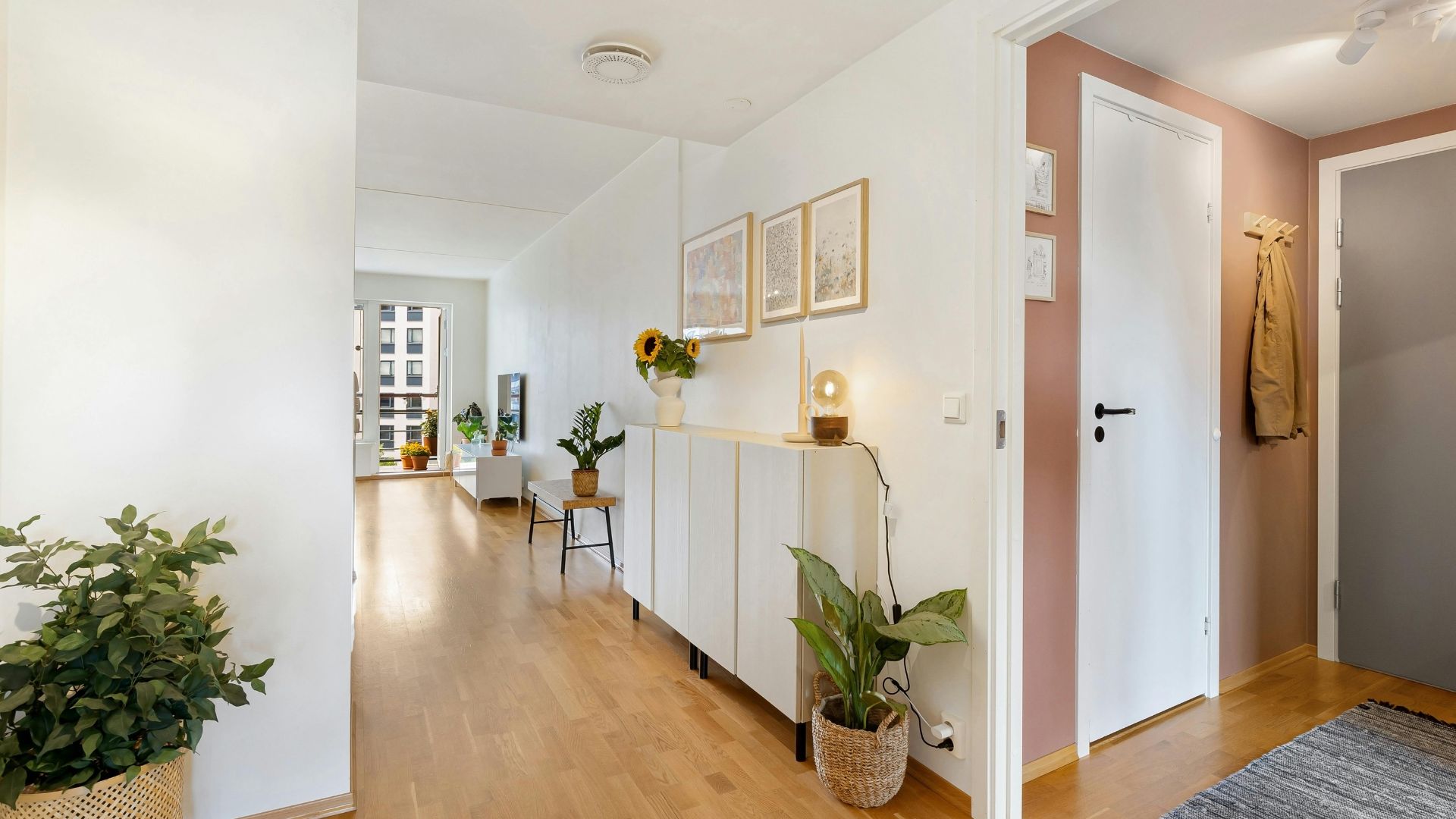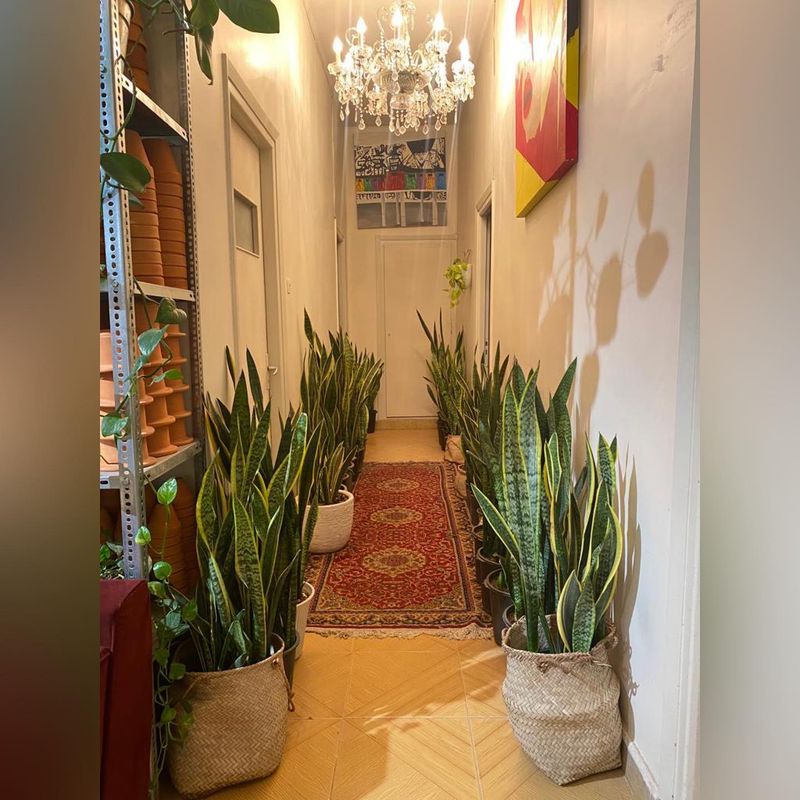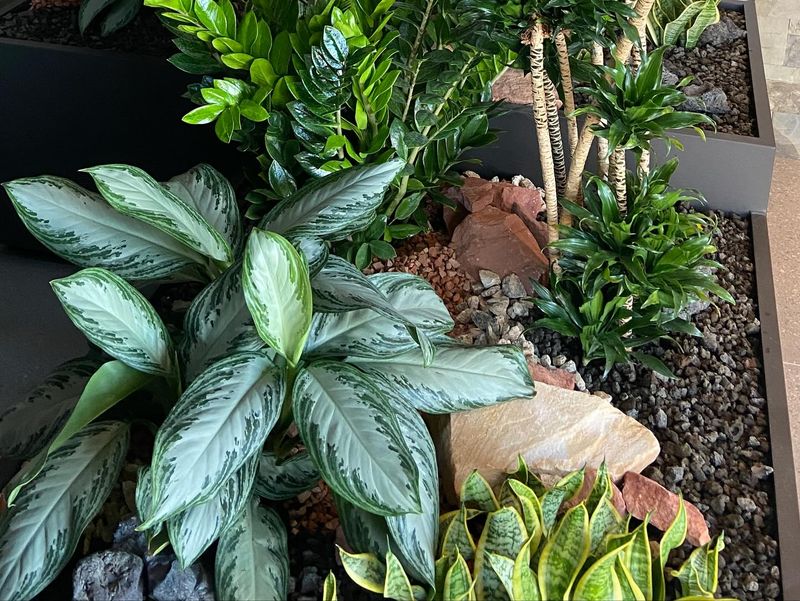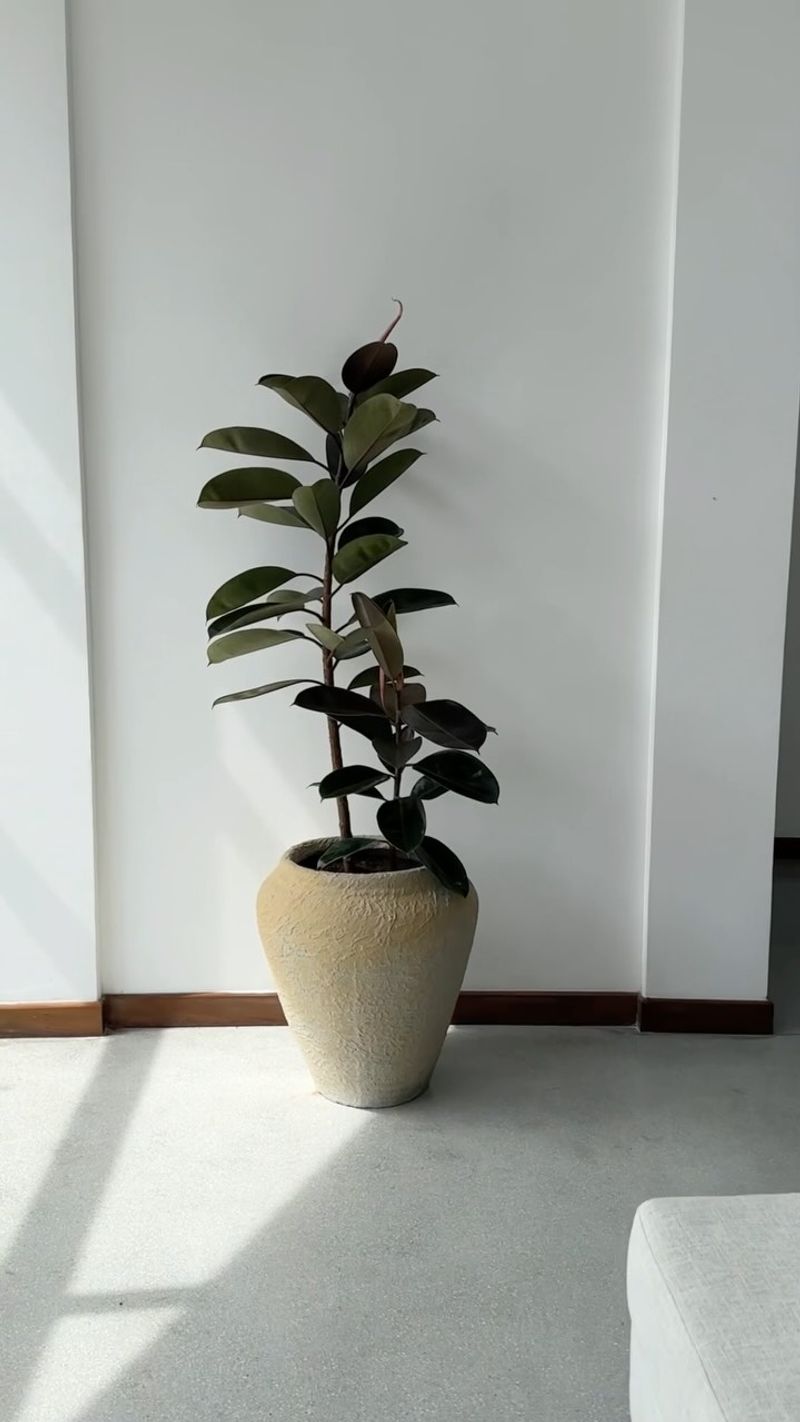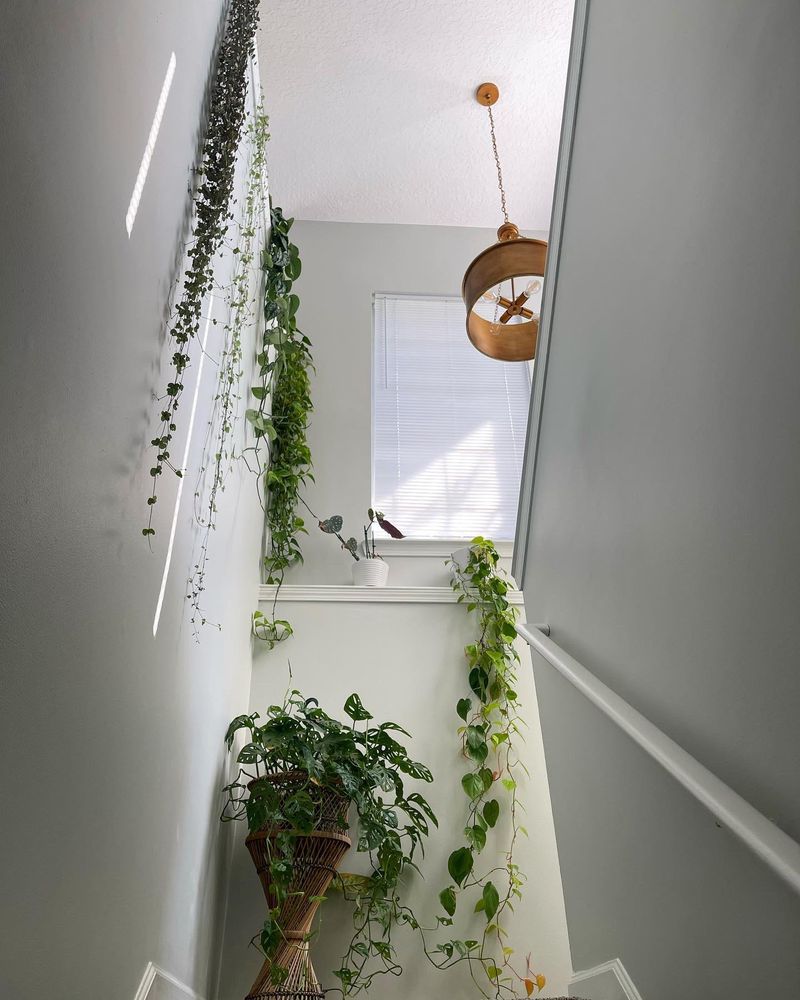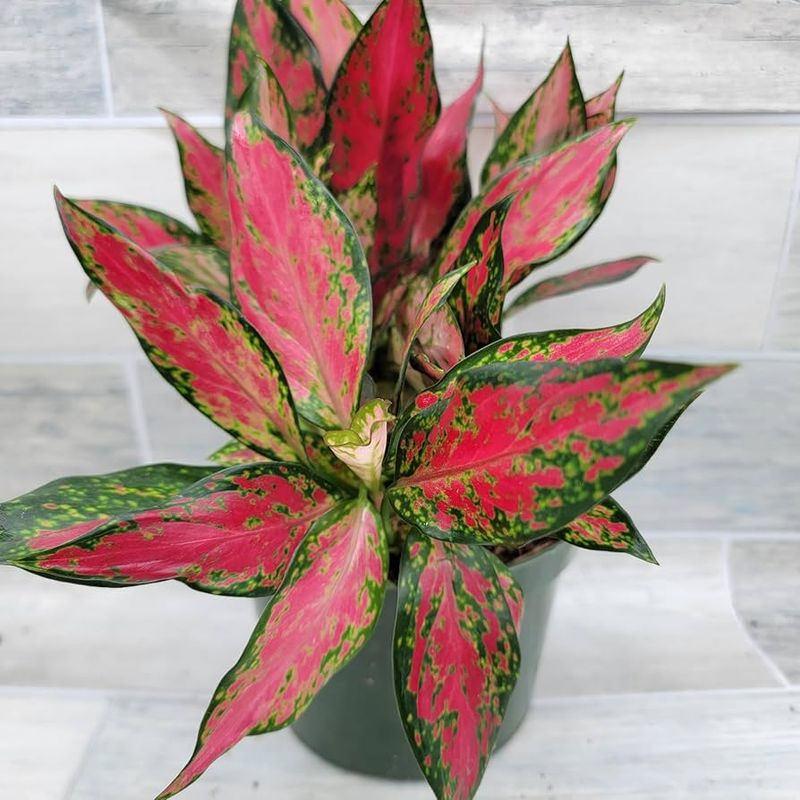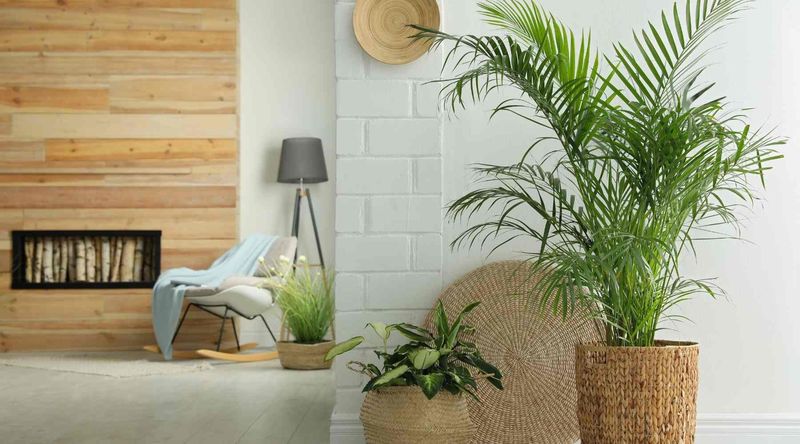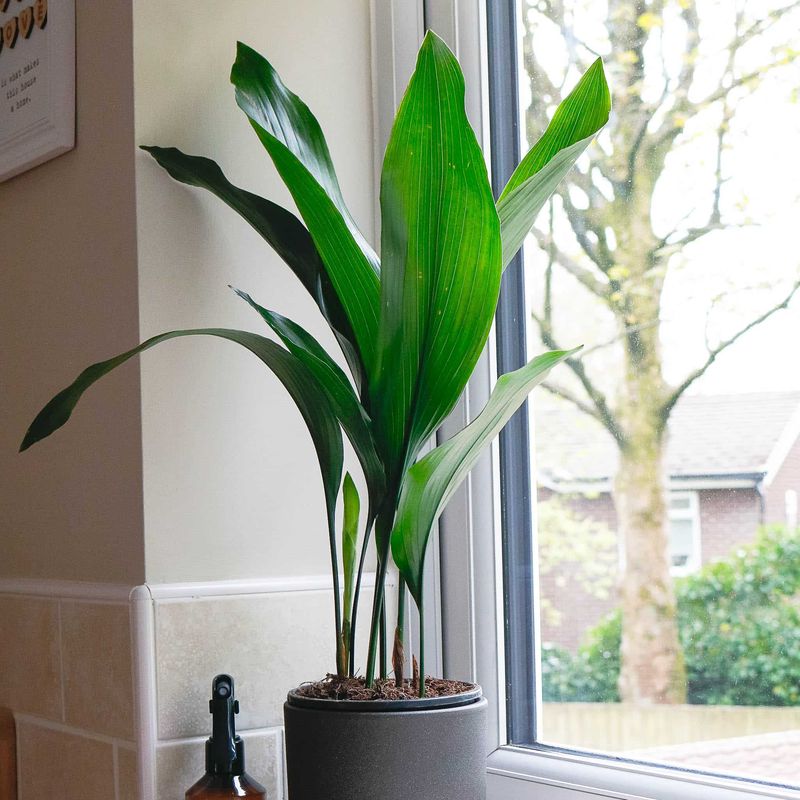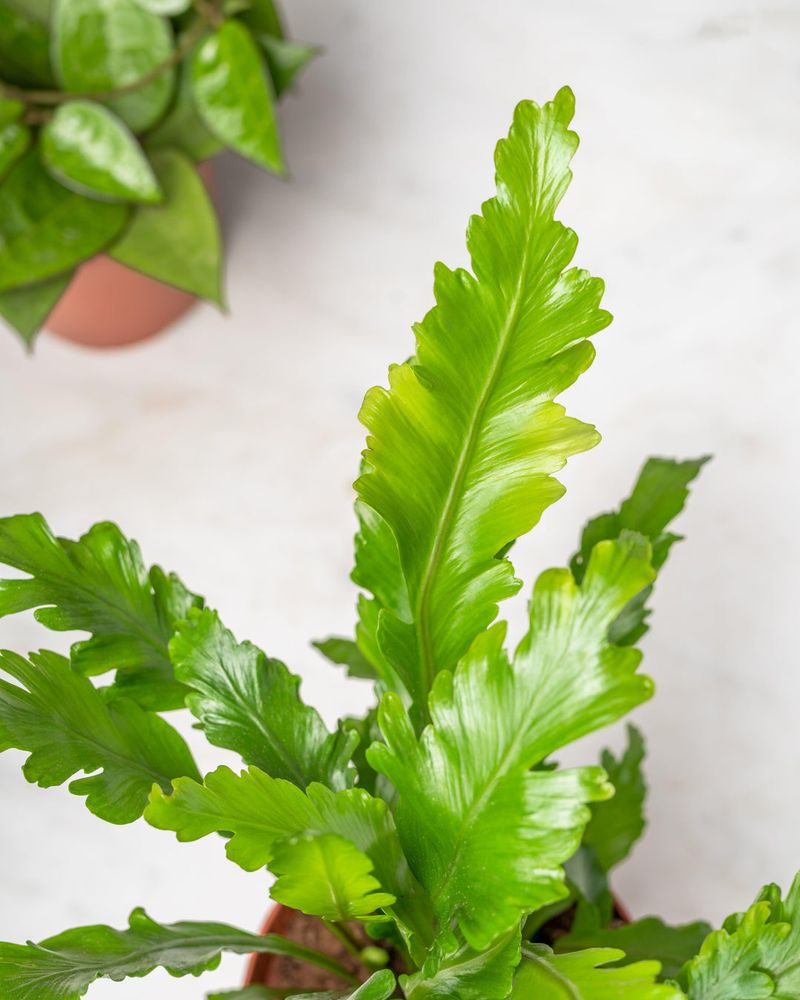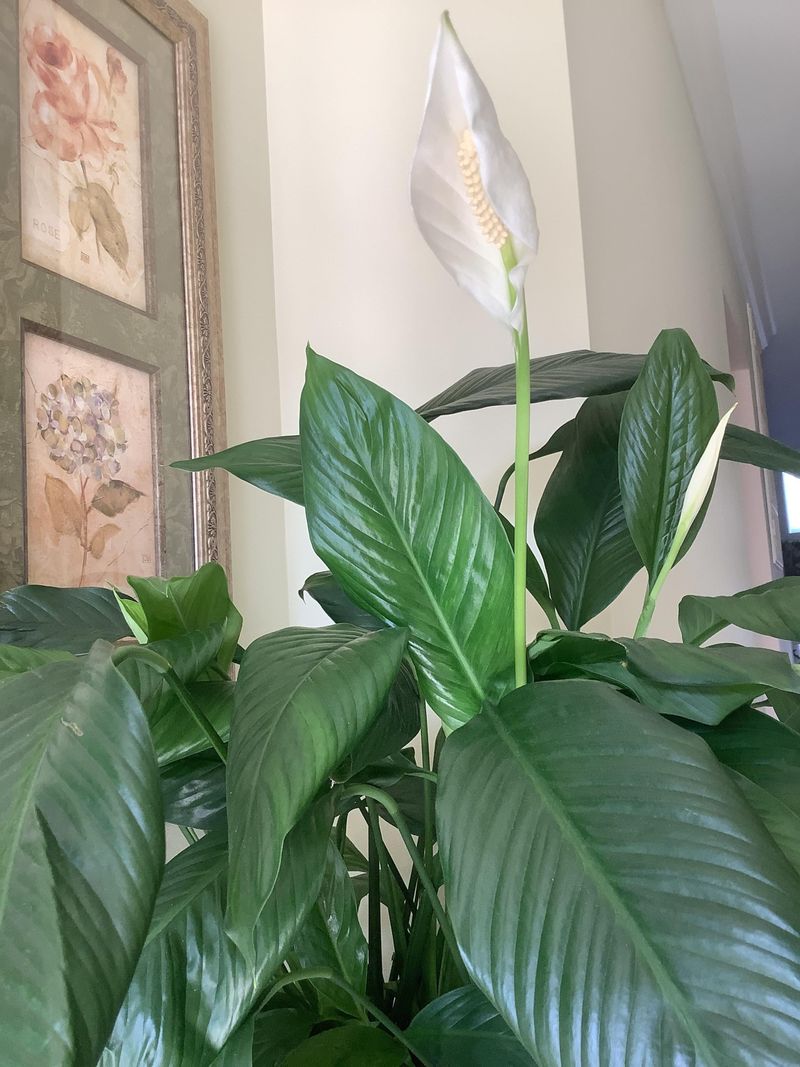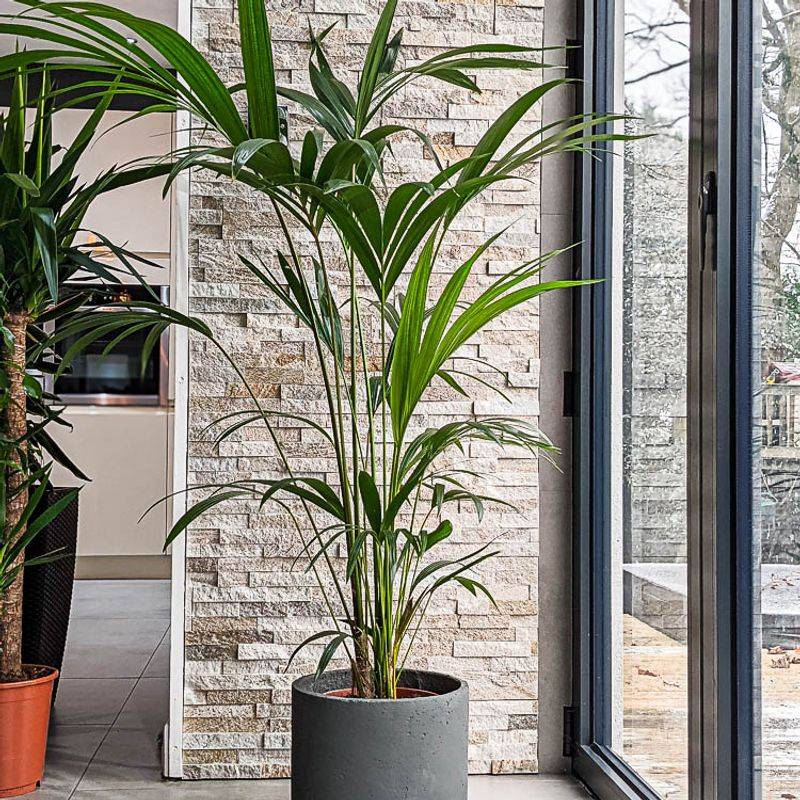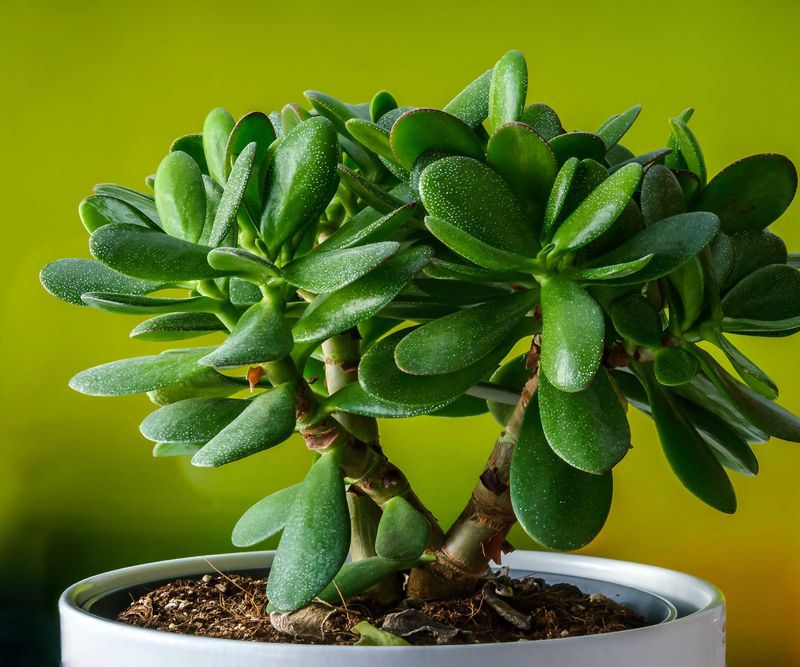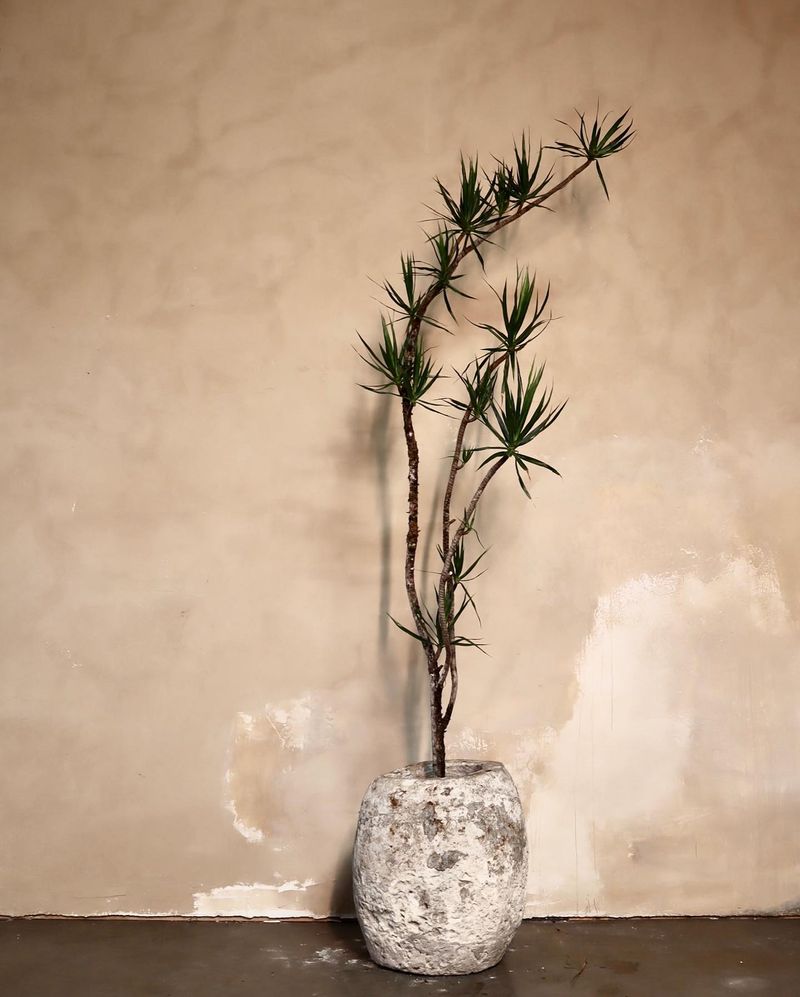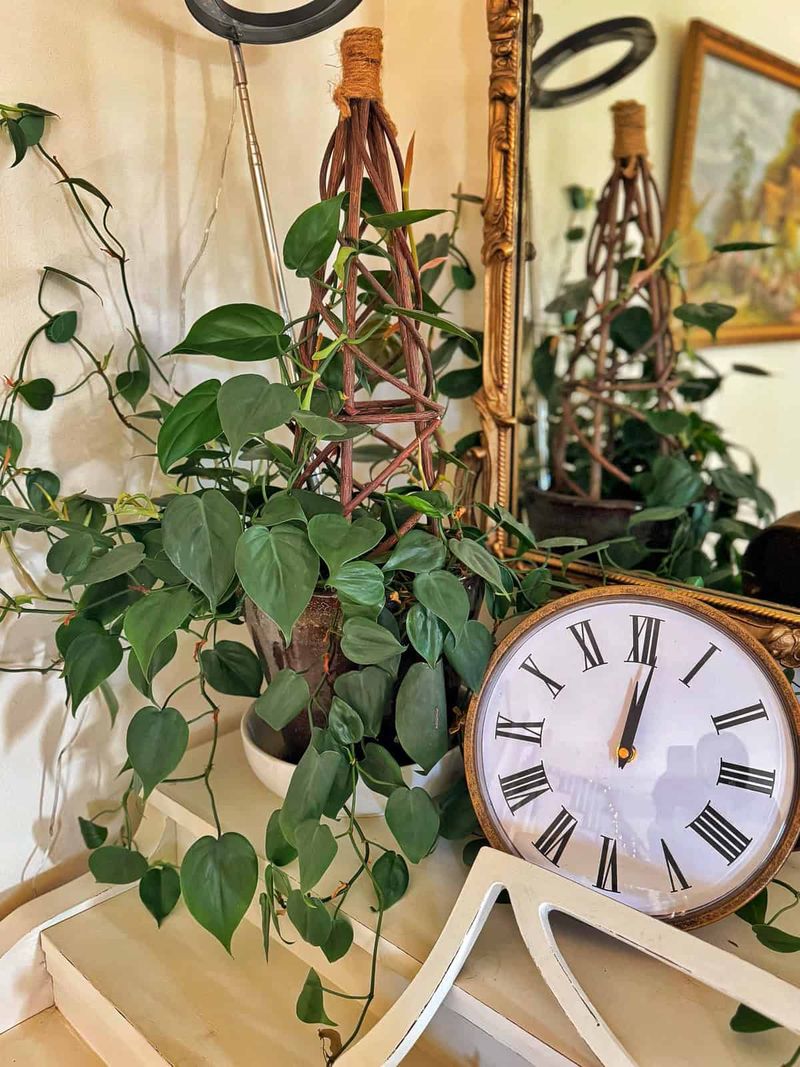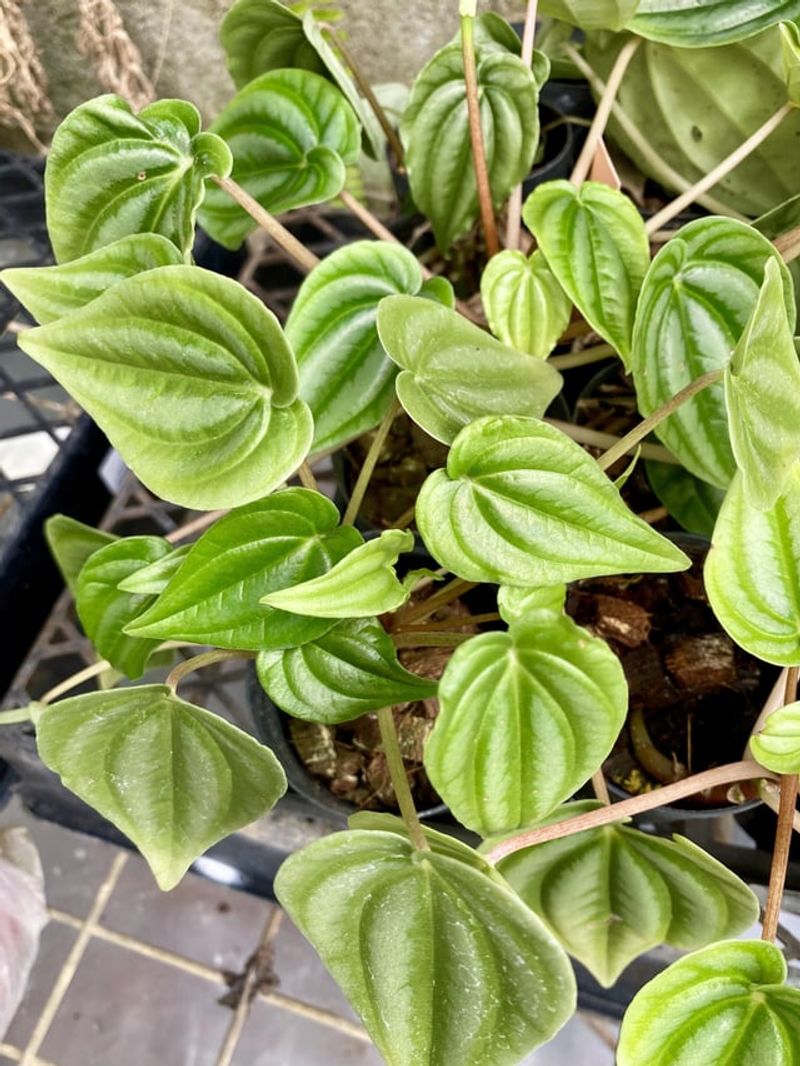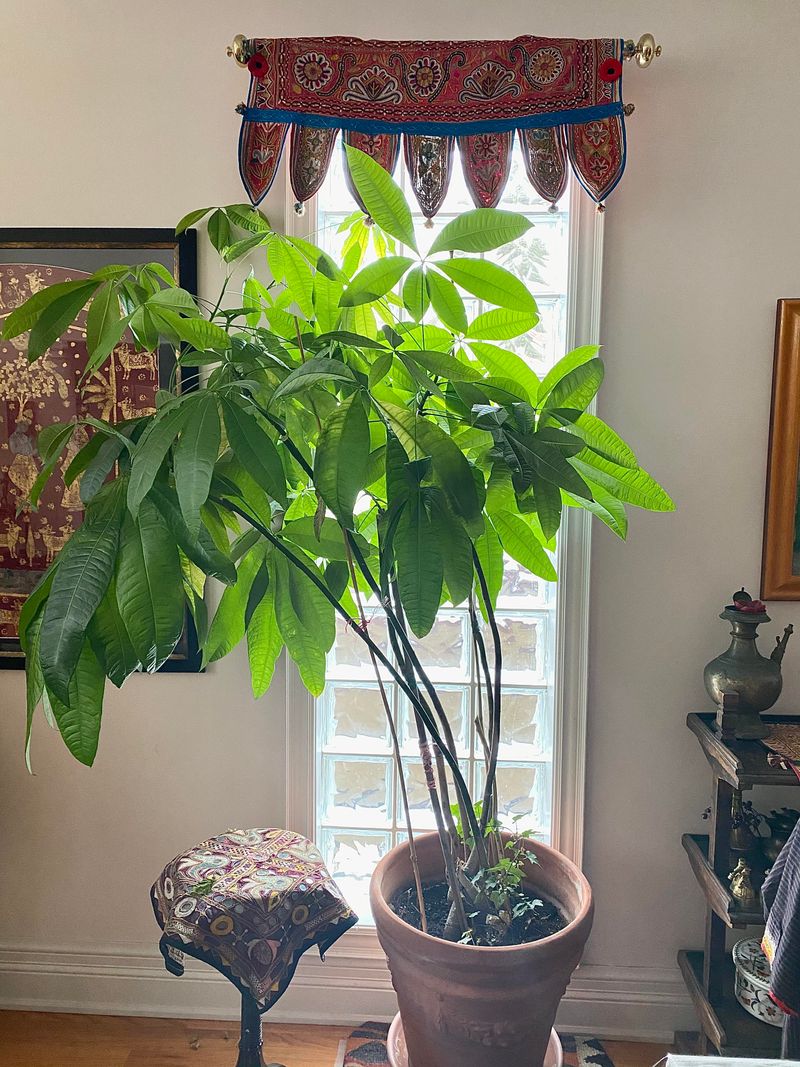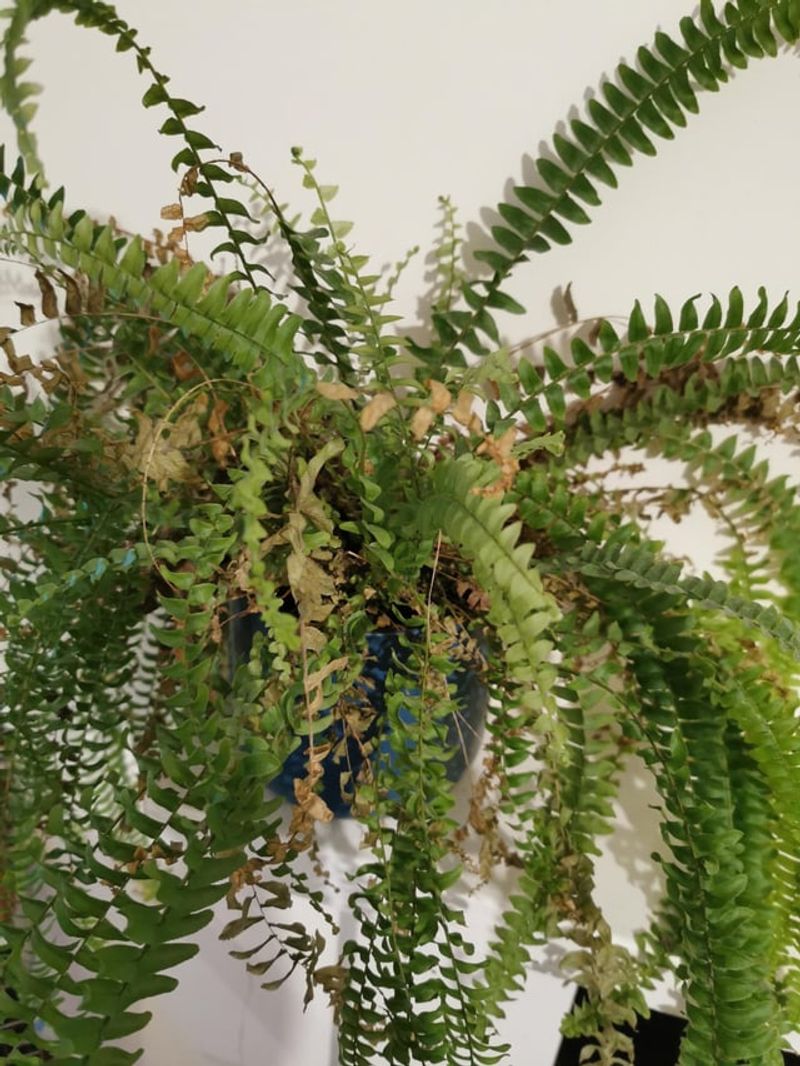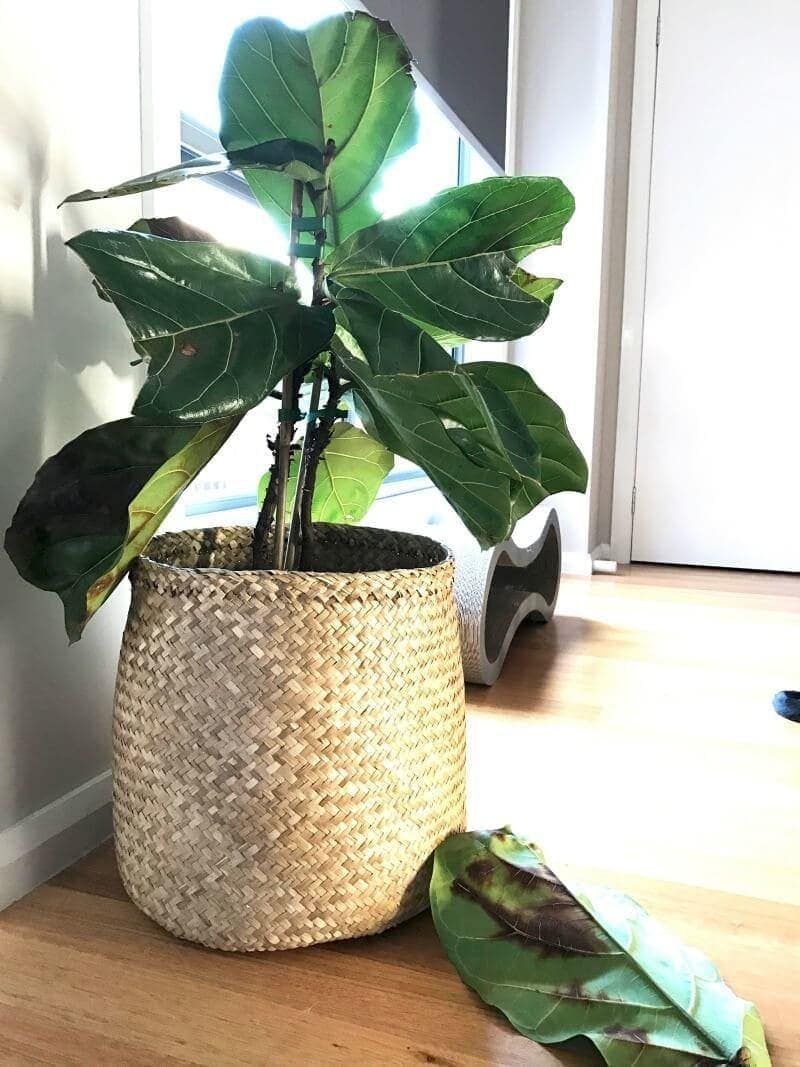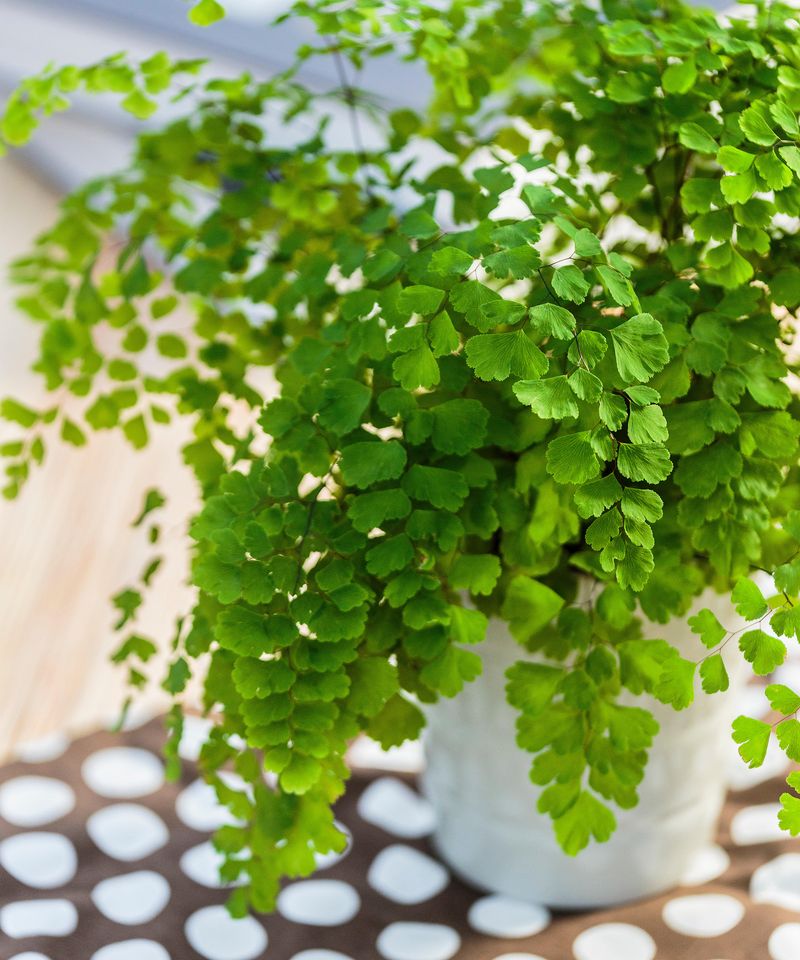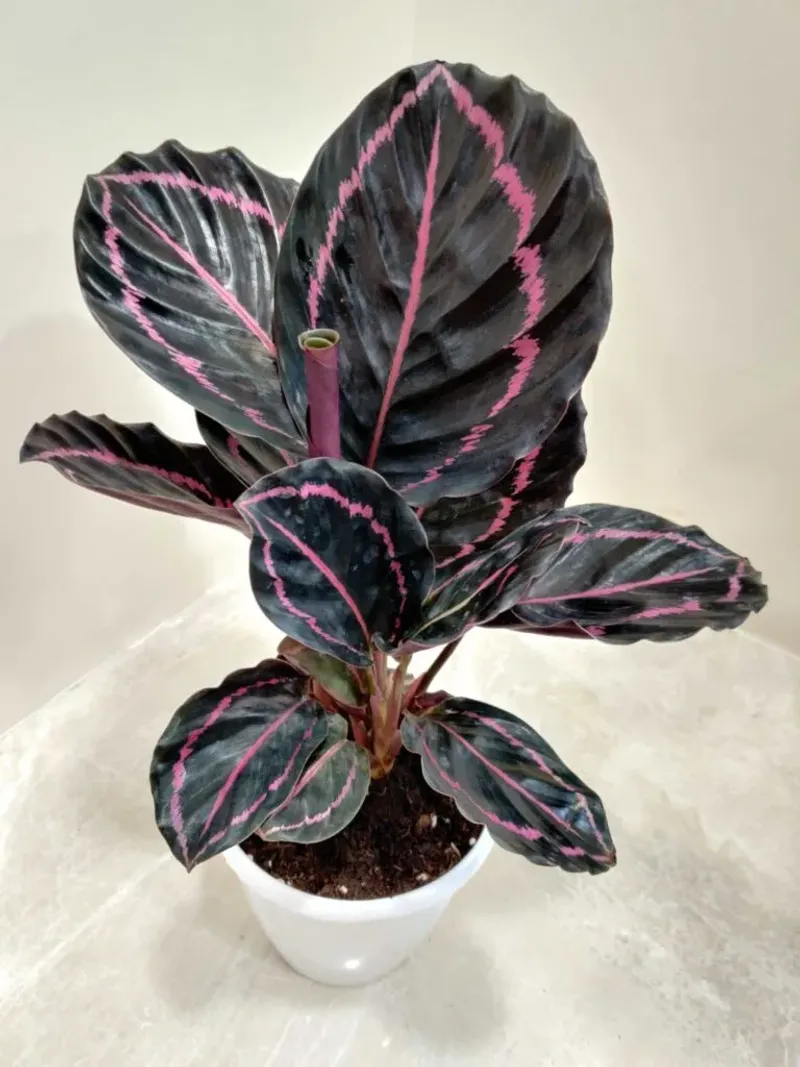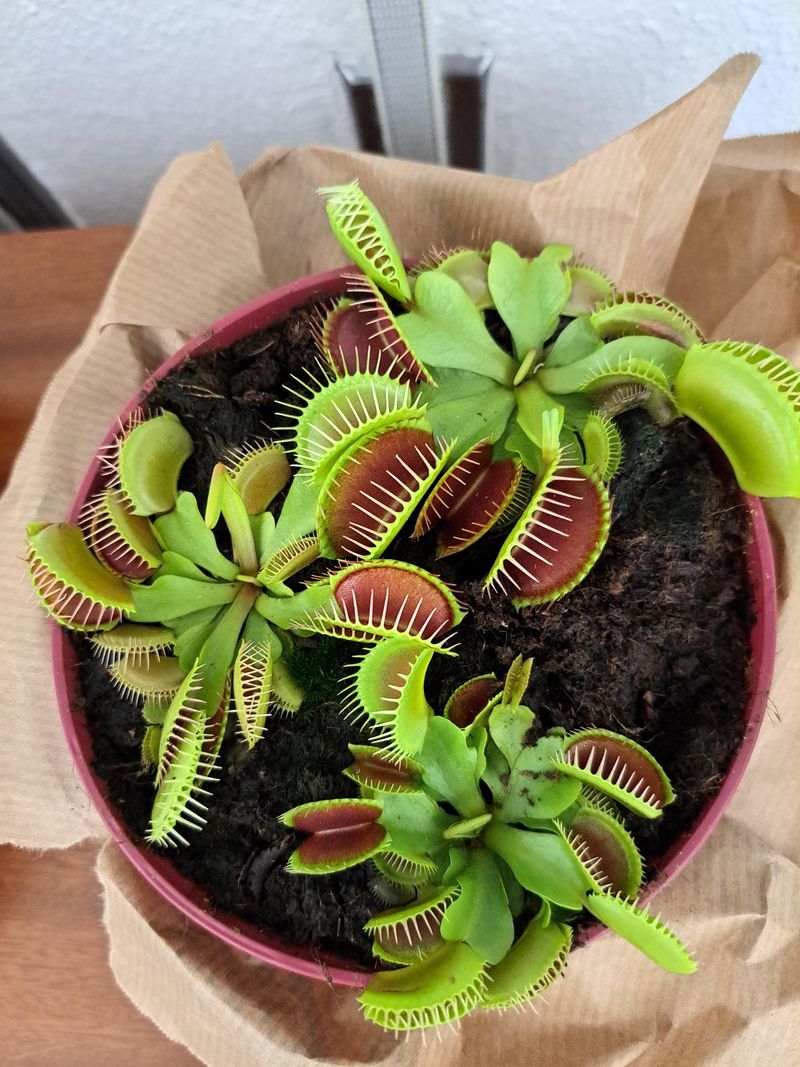Your entryway sets the tone for your whole home, and a well-chosen plant can make it feel warm and inviting right from the start. I’ve found that the right greenery near the door instantly lifts the mood.
Designers often turn to tried-and-true favorites for this spot—plants that not only look good but can handle the light and temperature shifts near a door. But not every plant is a good match here.
Some struggle with drafts, others grow too fast or drop leaves constantly, making a mess in the place you want to keep tidy.
1. Snake Plant (Sansevieria)
These sturdy plants practically thrive on neglect, making them perfect for busy entryways. Their tall, architectural leaves stand upright without sprawling, saving precious floor space.
I’ve had one by my front door for years that’s survived everything from draft exposure to occasional bumps from grocery bags. They tolerate low light conditions beautifully, though they’ll grow faster with some indirect sunlight.
Snake plants also filter toxins from the air, quietly improving your home’s air quality while making a strong design statement with minimal maintenance requirements.
2. ZZ Plant (Zamioculcas zamiifolia)
The glossy, deep green leaves of ZZ plants bring a touch of sophistication to any entryway. Their waxy surface reflects light beautifully, creating subtle dimension even in darker corners.
During winter when my entryway gets minimal natural light, my ZZ plant continues to look flawless without complaint. These plants store water in their thick rhizomes, allowing them to withstand irregular watering schedules that might happen during vacations.
For homes with children or pets, it’s worth noting that all parts contain calcium oxalate crystals, so place them where curious mouths can’t reach.
3. Rubber Plant (Ficus elastica)
The rubber plant’s large, glossy leaves create immediate impact in an entryway. Their upright growth habit means they won’t spread out and block your path, even as they reach impressive heights.
My rubber plant started as a small tabletop specimen and now stands proudly beside my coat rack, adding vertical interest without taking up much floor space. These plants appreciate consistent indirect light but will tolerate lower light conditions with slightly slower growth.
Wipe the leaves occasionally with a damp cloth to keep them dust-free and maintain their natural shine – this simple maintenance task makes all the difference in their appearance.
4. Pothos (Epipremnum aureum)
Cascading from a shelf or plant stand, pothos adds graceful movement to entryway designs. The heart-shaped leaves come in various patterns – from golden-streaked to marble-white variegation – complementing any color scheme.
When guests comment on my entryway pothos, I always mention how forgiving it is. Forgotten waterings or less-than-ideal light conditions rarely faze this adaptable plant. The trailing vines can be trimmed and propagated in water when they get too long.
For smaller entryways, consider hanging pothos from the ceiling to maximize floor space while still enjoying its lush, trailing beauty.
5. Chinese Evergreen (Aglaonema)
Chinese evergreens bring color variety beyond basic green, with varieties sporting pink, red, or silver patterns. Their compact size fits perfectly on entryway console tables or small floor spaces.
The first plant I recommend to friends nervous about keeping plants alive is always a Chinese evergreen. They tolerate low light conditions exceptionally well and can go longer between waterings than many other houseplants.
Designers love using these plants to echo accent colors in entryway rugs or artwork, creating cohesive color stories that tie the space together without overwhelming it.
6. Parlor Palm (Chamaedorea elegans)
Parlor palms bring a touch of tropical elegance without demanding tropical conditions. Their feathery fronds create soft texture and movement that contrasts beautifully with hard architectural elements often found in entryways.
During winter months when my apartment feels particularly stark, my parlor palm provides welcome greenery that thrives despite lower humidity levels. These plants grow relatively slowly, meaning they won’t quickly outgrow their allocated space.
Pet owners appreciate that parlor palms are non-toxic to cats and dogs, making them worry-free choices for homes where curious animals might take an exploratory nibble.
7. Cast Iron Plant (Aspidistra elatior)
Named for its nearly indestructible nature, the cast iron plant handles neglect with remarkable resilience. Its broad, leathery leaves create a strong visual anchor in entryway designs.
After placing one near my frequently-opened front door, I’ve watched it shrug off drafts, temperature fluctuations, and occasional forgotten waterings without complaint. These plants grow slowly, requiring minimal maintenance or repotting.
For homes with limited natural light, few plants perform as consistently well as the cast iron plant, making it a practical choice for darker entryways where other plants might struggle.
8. Bird’s Nest Fern (Asplenium nidus)
The wavy, bright green fronds of bird’s nest ferns bring organic softness to entryway designs. Unlike other ferns with delicate, feathery leaves, these plants feature broader, more substantial foliage that stands up better to occasional brushing.
My bird’s nest fern sits on a pedestal slightly away from direct traffic, where its sculptural form creates a focal point without being too delicate for the space. They appreciate higher humidity but don’t demand it as strictly as other fern varieties.
The central rosette growth pattern means these plants maintain a tidy appearance without sprawling, perfect for maintaining clear pathways in busy entryways.
9. Peace Lily (Spathiphyllum)
Peace lilies offer the perfect balance of elegant foliage and occasional white blooms that brighten entryways. Their glossy leaves create a refined look that works in both traditional and contemporary spaces.
When my peace lily’s leaves start to droop slightly, it’s a clear signal that watering is needed – making it one of the most communicative plants I’ve owned. After watering, they perk up within hours, providing visual satisfaction.
Beyond their beauty, peace lilies are excellent air purifiers, filtering common household toxins and improving air quality right where guests first enter your home.
10. Kentia Palm (Howea forsteriana)
Kentia palms bring a touch of sophisticated tropical style without demanding tropical care. Their arching fronds create elegant height without excessive width, fitting perfectly beside entryway benches or console tables.
Unlike some palms that quickly outgrow indoor spaces, kentia palms maintain a reasonable size for years. They handle lower light conditions better than most palms, though they still appreciate bright indirect light when available.
These plants rarely shed fronds when properly maintained, keeping entryway floors cleaner than some messier palm varieties – a practical consideration for this high-traffic area.
11. Jade Plant (Crassula ovata)
Jade plants bring good fortune according to feng shui principles – a perfect symbolic welcome in entryways. Their thick, glossy leaves and sturdy branches create interesting sculptural forms as they mature.
My jade plant sits in a sunny spot near my front door, requiring minimal attention beyond occasional watering. These succulents store water efficiently, making them forgiving if you sometimes forget to water.
For smaller entryways, dwarf jade varieties offer the same attractive qualities in more compact forms, fitting perfectly on narrow console tables or shelves without overwhelming the space.
12. Dracaena (Dracaena marginata)
Dracaenas offer dramatic height and architectural interest perfect for establishing visual anchors in entryway corners. Their slender trunks and spiky foliage create contemporary appeal without taking up much floor space.
When rearranging my entryway furniture, I appreciate how my dracaena’s narrow footprint allows flexible placement options. These plants tolerate a range of light conditions, though they grow faster and develop better color in brighter indirect light.
Available in various varieties with different leaf patterns and colors, dracaenas can complement virtually any design scheme while maintaining their easy-care reputation.
13. Philodendron (Heartleaf or Brasil)
Heartleaf philodendrons bring a touch of casual elegance with their trailing vines and heart-shaped leaves. Their adaptable nature makes them perfect for entryways with varying light conditions throughout the day.
The philodendron on my entryway shelf has gracefully grown around a mirror frame, creating a living frame effect that always earns compliments. These plants communicate clearly when they need water, with leaves becoming slightly limp before bouncing back quickly after watering.
For those who enjoy propagating plants, few are easier than heartleaf philodendrons – simply snip a vine segment and root it in water to expand your collection.
14. Peperomia (Various Species)
Peperomias offer incredible variety in a compact package perfect for entryway tabletops and shelves. From watermelon-patterned leaves to rippled, burgundy foliage, there’s a peperomia to match any design scheme.
These small plants pack big visual interest without demanding much care or space. Their semi-succulent nature means they store water in their thick leaves, forgiving occasional lapses in watering schedules.
For entryways with limited natural light, peperomias are among the few plants that maintain their attractive appearance and compact growth habit even in less-than-ideal lighting conditions.
15. Money Tree (Pachira aquatica)
Money trees bring good fortune symbolism and architectural interest with their braided trunks and umbrella-like leaf canopies. Their compact but impactful presence works well in entryways of various sizes.
The braided trunk of my money tree creates visual interest even in winter when I’m keeping my entryway decor minimal. These plants prefer consistent moisture but can recover from occasional dry spells, adapting well to busy households.
For entryways with medium to bright indirect light, money trees add height and dimension without spreading width that might obstruct passage – a practical consideration for this functional space.
16. Boston Fern (Nephrolepis exaltata)
NOT recommended for entryways! Boston ferns demand consistent humidity levels that most entryways simply can’t provide.
The frequent opening of exterior doors creates humidity fluctuations that cause these plants to shed constantly. I learned this lesson the hard way after placing a beautiful Boston fern near my front door, only to find myself sweeping frond bits daily.
These ferns also need regular watering and can quickly dry out in the air currents common to entryways.
17. Fiddle Leaf Fig (Ficus lyrata)
NOT recommended for entryways! Despite their popularity on social media, fiddle leaf figs are notoriously sensitive to environmental changes, making them poor choices for entryways where doors frequently open and close.
The drafts, temperature fluctuations, and changing light conditions common to entryways cause these dramatic plants to drop leaves in protest. My own fiddle leaf thrived only after moving it from my entryway to a more stable interior location.
These plants also grow quite large over time, potentially creating awkward traffic flow in what should be a functional passage area in your home.
18. Maidenhair Fern (Adiantum)
NOT recommended for entryways! The delicate, lacy fronds of maidenhair ferns demand consistent high humidity and protection from drafts – exactly what most entryways can’t provide.
Even experienced plant owners often struggle with these ferns in perfect conditions; in entryways, they typically decline rapidly. The wispy fronds also collect dust easily and look unkempt without frequent attention, creating maintenance challenges in busy households.
For the airy texture maidenhair ferns provide, consider substituting asparagus ferns or air plants in entryways – they deliver similar visual lightness with much greater resilience.
19. Calathea (Prayer Plant Family)
NOT recommended for entryways! Though undeniably beautiful with their patterned leaves, calatheas are among the most sensitive houseplants regarding environmental stability – making them poor candidates for entryways.
The frequent temperature changes and drafts in entryways cause their leaves to curl, crisp at the edges, or develop brown spots. When I moved my calathea from my entryway to a bathroom with stable humidity, the difference in plant health was remarkable.
These plants also dramatically fold their leaves at night (hence the name “prayer plant”), which can appear concerning to guests unfamiliar with this natural behavior.
20. Venus Flytrap
While these carnivorous curiosities might seem like conversation starters, Venus flytraps make terrible entryway plants! Their specialized growing requirements demand high humidity and specific lighting conditions that most foyers simply can’t provide.
Venus flytraps need distilled water and a terrarium-like environment to thrive. Most entryways lack the consistent temperature control these finicky plants demand, leading to a sad, dying plant that creates the opposite of a good first impression.
Additionally, these plants attract flying insects (that’s their whole purpose!), which isn’t ideal for the space where you welcome visitors. Save these fascinating specimens for a dedicated plant collection area elsewhere in your home.

